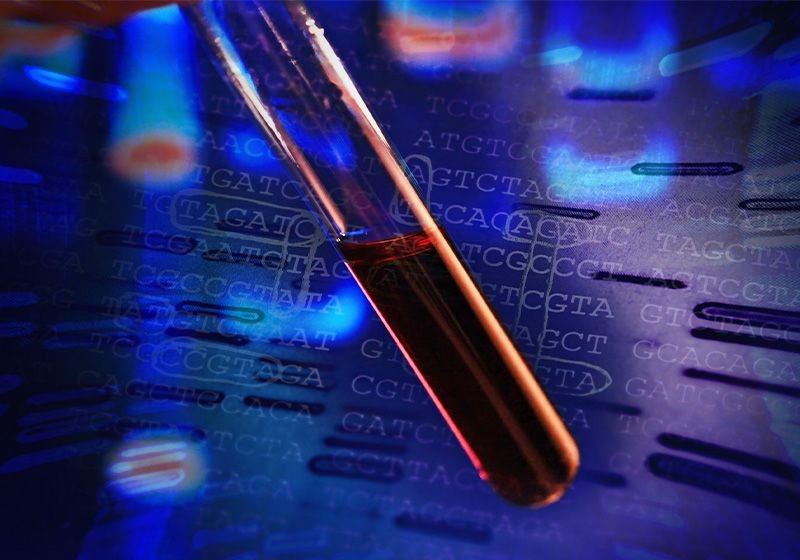
When TV shows like CSI: Crime Scene Investigation portray DNA processing in the forensic lab, the results appear instantly with a DNA match wrapping up the case in hours. However, the behind-the-scenes process of analyzing forensic DNA is far more intricate, requiring careful interpretation of the data.
Forensic DNA profiling uses polymerase chain reaction (PCR) to amplify short tandem repeats (STRs), which are highly variable DNA regions, typically with four repeating bases. This variability helps forensic scientists identify individuals. However, during PCR, the polymerase can slip on the repeats, creating “stutter” peaks—fragments that are one repeat shorter than the true peak.
Since PCR’s advent, scientists have developed filters to manage predictable stutter, but it remains a point of frustration while interpreting DNA profiles. “It’s especially hard when we’re dealing with DNA mixtures,” said Julie Sikorsky, a forensic scientist and manager of the Palm Beach County Sherrif’s Office Forensic Biology Unit. The levels of DNA may vary. “You’ve got these trace contributors, and these allelic peaks can either be masked by stutter or you can interpret an allelic peak as stutter.”
Many researchers have attempted to tackle this challenge, but they have had limited success. Recently, at the International Symposium on Human Identification (ISHI), scientists at Promega Corporation announced a novel DNA polymerase that drastically reduced stutter .
“When we started our project a few years ago, we didn’t think it was possible to do it, because many people have tried this before and have not succeeded,” said Bob McLaren, a biochemist at Promega.
When McLaren and his colleagues approached the daunting task, they focused on a key question: Why does stutter occur in the first place? “Our hypothesis is that strand slippage, or stutter, is caused by slippage of the DNA against the DNA polymerase that it’s binding to, and that’s performing the polymerization,” said David Mokry, a biochemist at Promega.
They explored combinations of various polymerases and DNA binding domains, focusing on structural motifs from nature. They were particularly drawn to features of T7 DNA polymerase—derived from the T7 bacteriophage that infects Escherichia coli—due to its ability to synthesize long stretches of DNA by binding and remaining attached for extended periods.
The team focused on T7 DNA polymerase’s thioredoxin binding domain (TBD), which has a structure similar to that of most thermostable polymerases, including Taq. Thioredoxin, which is ubiquitous in cells, binds to TBD, triggering a conformational change that helps TBD enhance the polymerase’s processivity. “So, it was along the same lines as thinking about if we had to improve the processivity by having the DNA [polymerase] bind more tightly around the DNA in the active site,” said McLaren.
They aimed to improve Taq polymerase by incorporating this feature from T7 DNA polymerase. They engineered a modified version of Taq polymerase by linking thioredoxin to TBD and positioning the domain close to the active site, where the polymerase adds nucleotides to the growing DNA strand. Mokry set up his experiment, running the amplification with their chimeric DNA polymerase. Then, he handed the samples to Nick Courtney, a biochemist at Promega, to run capillary electrophoresis, which separated the amplified fragments, and to examine the data peaks.
Promega Corporation research scientists (from left to right) Bob McLaren, Nick Courtney, and David Mokry unveiled a novel enzyme that significantly reduces stutter artifacts in forensic DNA analysis.
Promega Corporation
When Courtney saw the data, he couldn’t believe his eyes. “I took my laptop with me, ran down to [David’s] desk, and I’m like, ‘oh boy, you have to see this’, because not only did it work, but it went from not working to working reasonably well in a day.” They achieved about an 85 percent reduction in stutter across all loci. But the team wanted to improve it even further. Using machine learning, they analyzed amino acid sequences to identify mutations that enhanced the polymerase’s binding to its template strand. Then, they tested their improved enzyme on two- and five-contributor mixtures and observed further stutter reduction to below noise levels. Additionally, this enzyme functions through a workflow and sensitivity comparable to traditional STR systems.
This development and refining process took a few years. When team presented their long-awaited breakthrough announcement at ISHI for the forensic science community, Sikorsky recalled the audience’s reaction as a mixture of stunned silence and excitement. Having contended with stutter for decades, Sikorsky, who was not involved in the development of the enzyme, expressed her optimism for the new enzyme and its potential to streamline DNA analysis for casework. “To be able to incorporate a tool such as this is going to revolutionize the field.” She added, “So, without having to worry about that stutter peak, it increases the confidence in our DNA interpretation, which allows us to have a more accurate number of contributor estimates.” Although the enzyme is not yet commercially available, the research team is working on creating a kit for forensic analysists to use.
Disclosure of Conflicts of Interest: Promega Corporation has applied for a patent on this enzyme for use in STR analysis.






